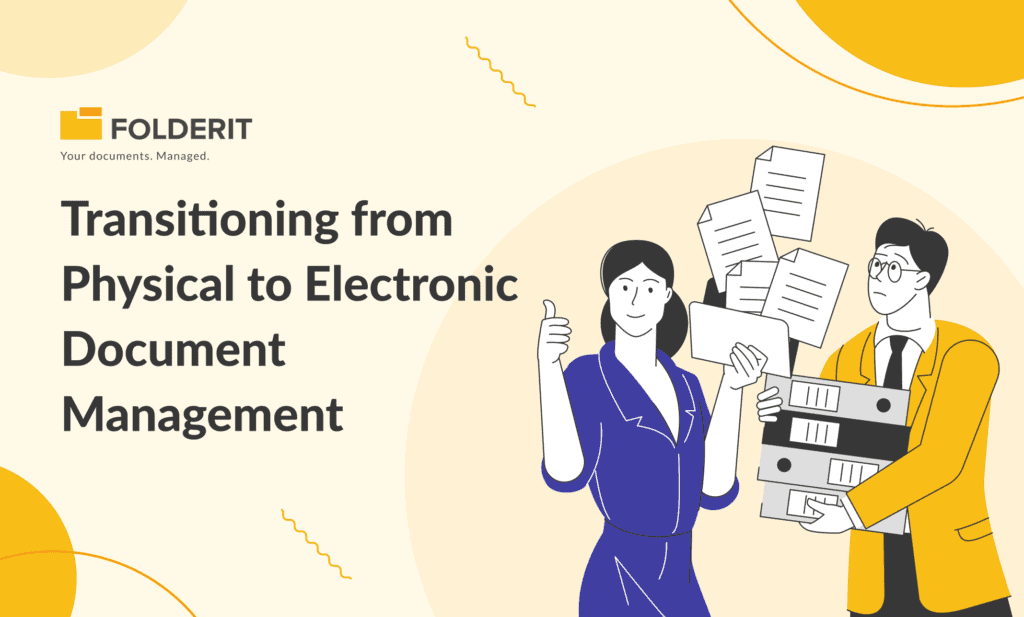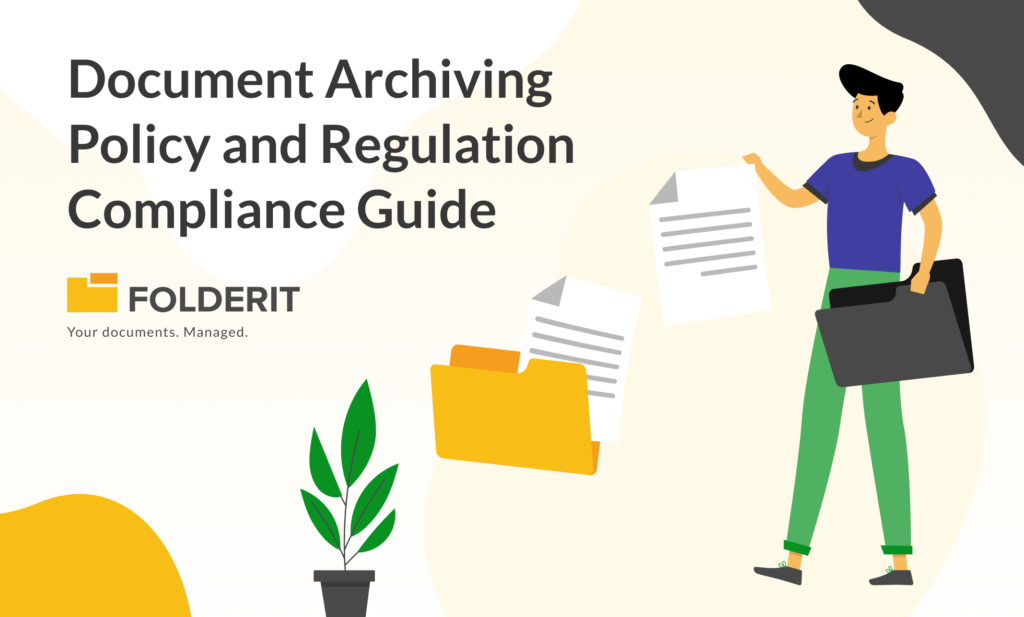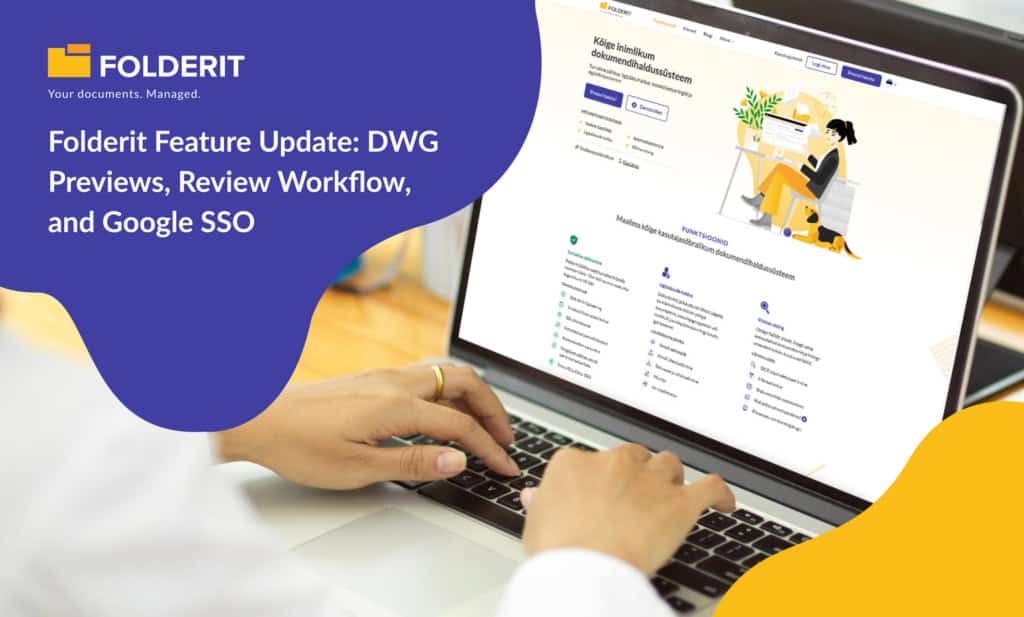Transitioning from physical to electronic document management systems (EDMS) is a necessary step for organizations aiming to enhance efficiency, security, and accessibility.
This transition involves more than just digitizing physical documents; it's about rethinking how information is managed and accessed.
1. Assessing Current Document Management Practices
- Audit Existing Records: Begin by auditing your current physical documents. Understand what you have, its relevance, and categorize documents based on their usage, confidentiality, and retention requirements.
- Identify Transition Scope: Determine the scope of the transition. Not all documents may need digitization. Prioritize based on document access frequency, importance, and legal compliance needs.
2. Planning the Transition
- Develop a Strategy: Create a detailed plan outlining the transition process. This should include timelines, resource allocation, and a clear outline of the digitization process.
- Choose the Right EDMS: Select an EDMS that aligns with your organizational needs. Consider factors like scalability, security features, user-friendliness, and integration capabilities. Folderit offers a robust platform that caters to these needs effectively.
3. Preparing for Digitization
- Organize Physical Documents: Before digitization, organize physical documents. This might involve sorting, labeling, and even purging unnecessary paperwork.
- Set Digitization Standards: Establish standards for scanning and digitizing documents. This includes resolution, file formats, and indexing criteria.
4. Digitizing the Documents
- Implement Scanning Processes: Use high-quality scanners to convert physical documents into digital formats. Ensure scanned documents are clear and legible.
- Quality Assurance: Post-scanning, conduct quality checks to ensure all documents are scanned correctly and are legible.
5. Indexing and Categorization
- Metadata and Tagging: Once digitized, use metadata and tagging for easy retrieval. This involves categorizing documents in a way that they can be easily searched and accessed.
- Folderit’s Advantage: Utilize Folderit’s intuitive categorization and metadata features to organize documents efficiently. Folderit’s system allows for easy tagging and retrieval, making the transition smoother.
6. Implementing the EDMS
- Data Migration: Migrate digitized documents into the chosen EDMS. This should be a secure and organized process to ensure no data is lost or misplaced.
- Folderit’s Seamless Integration: With Folderit, the migration process is streamlined. The platform supports various file formats and offers secure data migration tools.
7. Training and Change Management
- Staff Training: Conduct comprehensive training for staff to familiarize them with the new system. This includes how to access, upload, and manage documents within the EDMS.
- Change Management: Address the cultural shift. Transitioning to an EDMS requires changing long-standing habits and practices. Effective communication and support are key to successful change management.
8. Advanced Data Organization and Accessibility
- Advanced Indexing: Utilize advanced indexing features in your EDMS. This includes full-text search capabilities, which are essential for quickly locating documents.
- Folderit’s OCR Feature: Leverage Folderit’s Optical Character Recognition (OCR) technology. This feature enables content within scanned documents to be searchable, significantly enhancing data retrieval efficiency.
9. Integration with Existing Systems
- System Compatibility: Ensure that the chosen EDMS can integrate seamlessly with your existing systems, such as CRM, ERP, or other operational software.
- Folderit’s Integration Capabilities: Folderit offers integration with various platforms, ensuring that your transition to an EDMS does not disrupt existing workflows but rather enhances them.
10. Security and Compliance
- Data Security Measures: Implement robust security measures including encryption, access controls, and secure backups. This is crucial for protecting sensitive information.
- Folderit’s Security Standards: Folderit provides high-level security features, including 256-bit encryption and secure cloud storage, ensuring your data is protected against unauthorized access and breaches.
11. Regular Audits and Updates
- Conduct Regular Audits: Regularly audit your EDMS to ensure compliance with legal standards and internal policies. This also helps in identifying areas for improvement.
- Stay Updated: Keep your EDMS updated with the latest security patches and features. Regular updates are essential for maintaining the efficacy and security of the system.
12. Long-term Maintenance and Scalability
- Plan for Growth: Choose an EDMS that can scale with your organization. As your business grows, your document management needs will evolve.
- Folderit’s Scalability: Folderit’s cloud-based system is designed for scalability, making it an ideal choice for growing organizations. It adapts to increasing data volumes and changing business requirements.
13. Evaluating the Benefits
- Increased Efficiency: Transitioning to an EDMS like Folderit significantly enhances operational efficiency. Digital documents are easier to store, access, and manage.
- Improved Compliance: Electronic systems simplify compliance with regulatory requirements, offering better record-keeping and audit trails.
- Cost Reduction: Over time, electronic document management reduces costs related to physical storage, printing, and document retrieval.
14. Continuous Improvement
- Solicit Feedback: Regularly gather feedback from users to continuously improve the document management process.
- Adapt and Evolve: Be open to adapting your EDMS to meet changing organizational needs and technological advancements.
Conclusion
Transitioning from physical to electronic document management is a transformative process that brings numerous benefits to an organization. By following these practical and actionable steps, organizations can ensure a smooth transition. Implementing a system like Folderit further enhances this transition, offering a user-friendly, secure, and scalable solution. The key to success lies in careful planning, effective implementation, regular training, and embracing continuous improvement. As organizations evolve in this digital age, embracing electronic document management is not just a choice but a necessity for operational excellence and competitive advantage.



